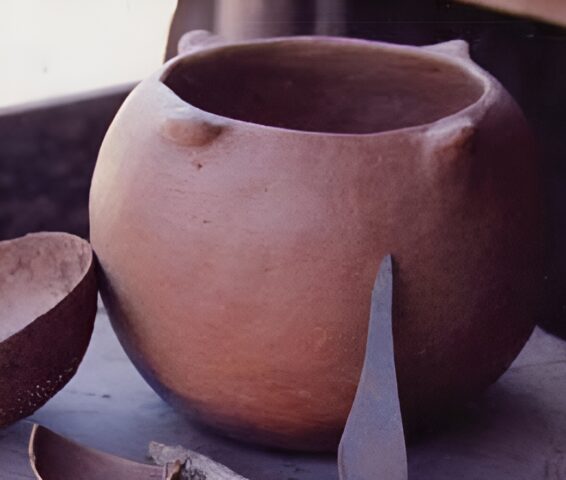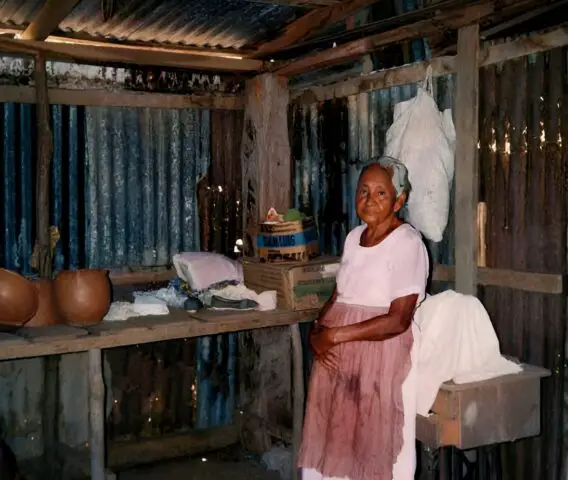In the Gulf of Nicoya is located Chira Island, one of the districts of Puntarenas. A place that has a very tropical essence, with that exotic air and that richness in history and culture, for its pre-Columbian heritage.
It is one of the largest islands in the Gulf of Nicoya, on Costa Rica’s Pacific coast.
The origin of island’s name comes from an Indigenous chief “Chirá” who, according to its inhabitants, came to the island because he was fleeing from the chief “Garabito” after a confrontation.
Since 1998, the island has been the thirteenth district of Puntarenas, through Decree 27.396.
The extension of Chira Island is approximately 50 square kilometers, has been inhabited since ancient times, and is also considered a significant site for the study of the civilizations that inhabited the region before the arrival of Europeans.
Its most important towns are Nancite (the center of the district of Chira), Bocana, Lagartero, Jícaro, Puerto Palito, Montero, and Pochote.

It is worth noting that Chira is not only known for its cultural and historical importance, but it is also an island rich in biodiversity and natural beauty. Nature is intertwined with the daily life of its inhabitants, who have found ways to live in harmony with their environment.
Past and present: The captivating nature of Chira
The mountains of Chira Island were, in pre-Columbian times, green jungles with numerous huge ceiba, mahogany, cedar, and oak trees, as well as mangrove and palm forests.
Today, the island is home to a variety of ecosystems including tropical rainforests, mangroves, and coastal areas. This diversity of habitats is home to a wide range of flora and fauna. Among the plant species, you can find palms, fruit trees, and medicinal plants, many of which are used by local communities.

In terms of fauna, the island is a refuge for numerous species of birds, reptiles, and mammals.
It is common to observe birds such as pelicans, the sparrow hawk, the hawk, and various species of parrots.

The mangroves surrounding the island are essential for marine life, providing crucial habitat for fish, crustaceans, and other aquatic organisms.
Natural resources for everyone
Chira Island is also rich in natural resources, with fishing being one of the main economic activities for its inhabitants. The waters surrounding the island are rich in marine biodiversity, which allows the capture of various species of fish and shellfish, which are essential for the local diet and economy.
Agriculture is another important activity on the island. The inhabitants cultivate products such as corn, rice, and tropical fruits that not only satisfy their food needs but are also marketed in nearby cities.
Details about its history and culture that have transcended in time.
The Gulf of Nicoya formed the southern limit of Mesoamerica where the Gran Nicoya sub-area was developed, before that significant fact, the region had Mexican migrations of the Chorotega-mange ethnic group (dirán and orotiña)”.
Chira Island was inhabited by several indigenous communities: Chorotegas and the Huetar, who left a remarkable cultural legacy. Archaeology has shown that these communities practiced agriculture, fishing, and gathering, developing a self-sufficient economy. In addition, the island became a center of commercial exchange, facilitating the trade of products and handicrafts with other nearby regions.
Archaeological artifacts such as ceramic and clay pots, metates, jade, and ocarinas, among others, have been found in its roots.

The pre-Columbian archaeological essence of Chira has a privileged importance. The findings of sculptures, ceramics, and stone tools reflect the skill and creativity of its ancient inhabitants.
For example, Chira pottery is particularly famous for its diversity of shapes and decorations, including geometric motifs and zoomorphic figures.
Undoubtedly, Chira Island has been the subject of several archaeological investigations that have contributed to a better understanding of Costa Rica’s pre-Columbian history. The findings have allowed researchers to draw connections between Chira and other Mesoamerican cultures, evidencing the cultural exchange that existed in the region.
One of the most fascinating aspects of the pre-Columbian Chira culture is the production of ritual and ceremonial objects. Ceramic figurines, often representing deities or human figures, reveal aspects of the spiritual life and beliefs of these communities. These pieces not only have artistic value but are also crucial to understanding the rituals and cosmology of indigenous peoples.

Conservation and Tourism
Over the years, Chira has become a tourist destination that attracts visitors interested in its cultural and natural heritage.
The promotion of sustainable tourism on the island seeks to preserve its historical richness while providing visitors with the opportunity to experience the local culture, natural beauty, and hospitality of its inhabitants.
In addition, tourists can participate in activities such as hiking on nature trails, bird watching, and kayaking in the mangroves. These tours offer the opportunity to learn about the island’s biodiversity and the daily life of its inhabitants.
The community and the making of cultural pieces
The community of Chira is fundamental in the conservation of its natural environment. The islanders have developed a deep knowledge of their ecosystem and have maintained traditions that promote respect for nature. The local culture, influenced by their indigenous and Costa Rican roots, is reflected in agricultural practices, gastronomy, and festivities that celebrate their connection to the land and the sea.
In Puntarenas, there is a rustic pottery market, whose pieces were made in a traditional way, reminiscent of pre-Columbian pottery.
The confection and exhibition, in previous years, motivated the School of Plastic Arts of the University of Costa Rica to undertake an investigation to document the origins of this ceramic, which they determined came from the island of Chira. The researchers first visited the island in 1978, when they met Damiana Matarrita, who was the only person dedicated to the ceramic activity, in an artisan workshop located in the courtyard of her house. She obtained the raw material directly from her property.
According to texts, Damiana maintained the heritage of her Chorotega ancestors, in order to safeguard the vestiges of an art in the process of extinction.

Damiana’s house was made of rustic wood, with a dirt floor and a wood stove; it was surrounded by pastures, with zebu cattle, and at the end, on a slope, there was a small white sandy beach.
The pieces that Doña Damiana made were intended for domestic use; they were very simple, without decoration, but with very smooth surfaces and with the natural traces of a wood-burning oven. Among them were jars, bean bowls, comales and “nimbueras”.
In these times, the artisans continue elaborating wonders, always leaving the name of Chira Island as characteristic of the culture in Costa Rica.
Chira Island is a cultural treasure that offers a window into Costa Rica’s pre-Columbian past. Its wealth of archaeological artifacts and its history as a center of cultural exchange and activity make it a place of great interest to archaeologists, historians, and tourists alike. The conservation of its heritage and the promotion of its cultural richness are essential to keep alive the history of the communities that once inhabited this beautiful island, and the beginnings of Costa Rica.

– Advertisement –
Source link
TCRN STAFF



